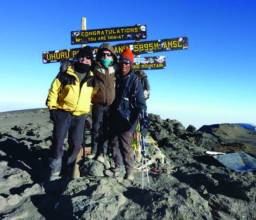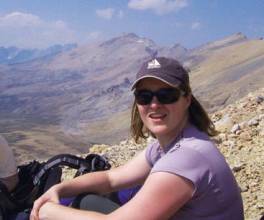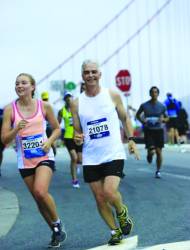 Driving across the equator in Kenya, July 2009. TomTom ONE.
Driving across the equator in Kenya, July 2009. TomTom ONE.Engineering specialties
Optimal estimation algorithms, e.g., Kalman filters, and signal processing.
GNSS event that most signified to you that GNSS had “arrived”
Engineering specialties
Optimal estimation algorithms, e.g., Kalman filters, and signal processing.
GNSS event that most signified to you that GNSS had “arrived”
Frank van Diggelen says, “‘GPS’ is now a general-purpose noun meaning ‘a thing, method or idea to help you find your way.’ Search for ‘GPS’ in Amazon Books, and you’ll find ‘GPS for the Soul’, by Rabbi Nadav Cohen, ‘Your Jesus GPS: Find Direction, Personal Growth, Inner Peace and Joy’, ‘The Money GPS: Guiding You Through an Uncertain Economy’, and so on”
“I think it’s kind of funny and really great.”
As a consumer, what GNSS product, application, or engineering innovation would you most like to see?
Cars with well-placed docking stations for smartphones and/or the ability to mirror the smartphone screen on a car monitor so that we can use the phone for navigation – and music, podcasts, etc.
“Features and performance in new phones are almost always superior to what’s built into a car,” van Diggelen says.
Favorite equation:
x = Hy
“This will make sense to most Matlab geeks,” says van Diggelen.
The backslash operator ( ) is the matrix division of H into y, or shorthand for the solution to y = Hx.
When y is the vector of pseudorange residuals, and x is the 4-vector of position and time adjustments, then this is the standard GNSS nav equation, and x = Hy is the least-squares solution. If you differentiate both sides with respect to time (while holding H constant), then this is the equation to produce velocity from Doppler residuals.
If you differentiate both sides w.r.t. time (including H), and rearrange terms, then this equation produces the Doppler-Nav result (where you can compute position simply from Dopplers, or from a combination of Doppler and pseudoranges). If you add differential corrections to y, then all of the above is true for DGNSS.
“So you see,” he concludes, “this simple equation is at the heart of everything we do in GNSS nav.”
GNSS Mentors
Alison Brown at Navsys introduced van Diggelen to GPS and taught him most of what he knows. Charlie Abraham and Sergei Podshivalov taught him the rest of GPS and GLONASS, at Global Locate and Broadcom.
“Per Enge, at Stanford, continues to teach me to teach,” he says, “and John Betz [of MITRE Corporation] is the world’s best mentor and guide through the increasingly complex jungle of new GNSS codes.”
Patents held and/or pending:
Frank van Diggelen holds more than 80 patents primarily about assisted-GPS, with many more pending. Issued patents include: Coarse-time Navigation; Long-Term Orbits for A-GNSS; GPS Doppler- Navigation; and interchangeable use of satellites from different GNSS systems, using A-GNSS and other techniques to resolve clock offsets. Also, author of A-GPS: Assisted GPS, GNSS & SBAS, published by Artech House and available in English and Chinese versions.






